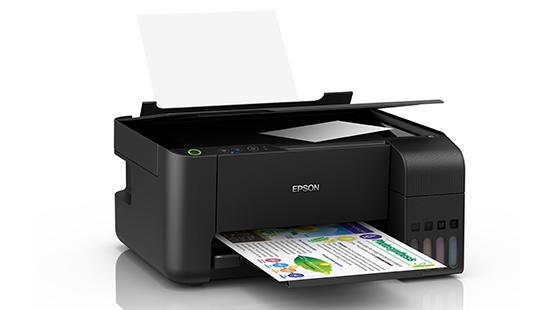Tech
How to create a PES file for embroidery

Professional embroidery machine has made intricate designs easy to stitch. Machine embroidery provides you with consistent quality and exact designs of your embroidery stitches on your fabric. Machine embroidery has turned your hobby into a profession and a way to earn money with convenience.
Learning machine embroidery is not that difficult as it seems to you can learn it in no time, and practice will improvise your skills. You may follow all tips step by step to get perfect embroidery stitches on your fabric.
There are few essentials which you need to get started with professional machine embroidery. For instance, you need embroidery floss, fabric and a perfect design for your garment. Designs and patterns are the first things you need in all the process.
Whether you are a beginner or doing your embroidery stitches for some time, you may have an idea of how tricky it can get to transfer JPG files into PES files. In this article, I’ll try to help you know all about PES files and create them for embroidery on professional embroidery machines.
What is PES?
PES is a popular embroidery format as it is compatible with professional embroidery machines. For those who came across this term for the first time, it is a design file that includes instructions for machines to stitch the particular embroidery pattern and design.
PES file format is used in home users, whether professional or for personal use. The file formats are compatible with PE embroidery machines which are pretty popular embroidery machines at homes. Also, remember that in factories and giant setups, it is rarely used.
PES is generalized as file format; it is a derived file to a digital format so that your embroidery machine can work accordingly. The files can be derived from JPEG’s or illustrators and converted to make them compatible with machines.
PES files are different from design files in many other ways, too, like stitching instruction in digital language. The instructions include all necessary steps like the density of stitches, their length and underlay settings.
How to create files:
There are few methods to convert design files into embroidery PES files; let’s have a look into it:
Auto-conversion:
Auto-conversion of a file is more accessible than manual conversion or digitization. So whether you are a professional or beginner, it will be comparatively easy for you. Yet, there are few drawbacks of selecting auto conversion. For instance, you might not get the best results. A color scheme can be dull as you have expected. That is why a manual conversion is better.
Manual conversion of PES file:
- An embroidery software platform:
An embroidery software platform should be the one that is compatible with your professional embroidery machine. You should be familiar with using it. It is not like you have to master all the details, but there must be a little know-how.
- Transfer files to software:
Once you are familiar with the software and the file is in the digital format, transfer to the software. It will automatically convert all the essentials to stitches when you import it. The software will decide the type of stitches, number of stitches, angels, and another critical step required for the conversion process. You can always set it up manually according to the design.
There is software available in the market which will alter the design a little according to the fabric you have selected for embroidery.
- Choose the colors:
When your software automatically chooses all the information, there are chances that it might pick up the wrong colors. Sometimes the software chose the colors you specifically hated to have on your fabric. That’s why when the conversion is complete, pick up the colors and change with the one you despised.
- Import to a new file:
When you have perfected all the minor and major details, import the new file into the software. Your design is ready now; import it into a new file, set up the stitching manual, and start stitching.
Conclusion:
Creating a PES file for embroidery needs a little concentration and know-how to the software. We recommend using the manual conversion method, as you will have complete control over every step. In the end, the decision is yours – whether it is manual or auto conversions, both have their perks. Good Luck!
Tech
Unlock the Future: Master Artificial Intelligence with Great Learning’s Comprehensive AI Course


It is vital that workers learn these skills as AI, generative AI and machine learning continue to advance.
The rise of artificial-intelligence-based technologies (AI) is unquestionable today, as is their potential to disrupt various types of work, including language processing, pattern recognition, problem solving, and even decisions.
ChatGPT, for example, represents a completely new field of technology. This includes generative AI, a subset artificial intelligence that is focused on creating original music, images, and text by learning from previous examples. Generative AI, instead of copying or recognising predefined patterns based upon rules, uses complex algorithms based often on neural networks to create original content.
These developments have been made possible by the huge advances in machine learning, a branch of AI which involves teaching computers how to learn using data. Data collection, model-training, learning from data, examining model output, and adjusting parameters are all part of this process. The development of neural networks, a type of computational training model inspired by the brain, has been made possible through machine learning. These models are built from interconnected virtual “neurons” that are organized into “layers” to process data. This system allows a model to be taught how to balance different parameters in order to recognise patterns and learn them, as well as make predictions and complete tasks. Deep learning is another name for this subset of machine-learning.
Deep learning focuses on training artificial neural networks with multiple layers to represent complex data. The term ‘deep’ refers to the depth of the neural network, meaning the many layers of inputs or outputs. This system has been highly successful in solving tasks like image recognition (recognising images/faces/patterns), natural language processing (ChatGPT-like models which can understand and generate human-like responses, most often used to power chatbots) and speech recognition (used for voice assistants or transcribing speech to text) among others.
It is important that we start to learn about these new technologies, given the potential disruption AI will bring to our world. Many people think that you have to be a software or computer engineer to grasp these concepts. However, anyone can do so regardless of their educational background.
Here are four online certificate programmes that can be accessed for free by leading industry players like Microsoft, Google and Infosys. They can all be accessed for free online
GUVI AI for India 2.0 program
The Government of India launched AI for India 2.0 – a free online course that focuses on AI. Skill India has developed the course in collaboration with GUVI. The program has also been accredited by IIT Madras and the National Council for Vocational Education and Training.
This is a virtual one-day event for the development of tech skills in collaboration with the Ministry of Skill Development & Entrepreneurship. It will be held on 15th August. As part of their preparation, participants will have free access to LEVI’s premium course from July 15th.
GUVI is a personalized learning company founded by IIT Madras, IIM Ahmedabad. It offers online learning and upskilling opportunities for learners. GUVI offers these courses in a variety of regional languages.
Infosys AI certification courses
Infosys launched a free AI Certification Training Program to help users develop new skills. The Infosys Springboard platform offers a free AI course.
The platform offers several other certifications courses on AI-related topics. These courses are designed to be introductory and cover AI, generative AI and deep learning. The platform offers master classes in AI and generative AI.
Infosys Springboard, a virtual learning platform, offers curriculum-rich experiences. Candidates can access corporate-grade training online, from any device. The platform is a part of Infosys CSR commitment, which aims to empower 10,000,000+ people with digital skills by 2025. It caters to all learners, from class 6 up to lifelong learners.
Microsoft’s course on generative AI
Microsoft has created a new AI skills programme to assist people in learning this subject. This initiative is part Microsoft’s Skills for Jobs program, which includes free coursework created with LinkedIn.
The new course teaches AI frameworks, introductory concepts and provides a certificate of completion. Microsoft believes AI will disrupt the workplace and that this course helps people to improve their AI skills..
Google Cloud AI courses
AI and machine-learning careers are in high demand at the moment. This is especially true when it comes to Google Cloud. The potential applications of generative AI are vast, including in the fields of information technology and branding. Machine learning is a powerful tool that can be used to help workers understand data, create models, and create interactive functions. These skills will become essential in the future for data scientists, machine learning engineers, and data engineers.
Great Learning’s Digital Marketing Course
Great Learning offers an in-depth AI course designed for both beginners and professionals who seek to master artificial intelligence. This course covers essential AI concepts like machine learning, deep learning and natural language processing as well as more advanced topics like computer vision and AI ethics. Taught by industry professionals, this course features video lectures, hands-on projects, and real-world case studies to hone practical skills. Convenient and flexible to fit into busy schedules, it is accessible even for working professionals. One can also enroll in a power bi course to complement this course. Participants who successfully complete this course earn an AI certification that can significantly advance their careers – along with additional career support and networking opportunities – offering a complete pathway towards AI success.
Tech
5 ways that PopAI helps impress your boss?


Impressing your boss with your work is a difficult task to do. You may be a hard or smart worker, but a boss can find flaws in you. Yes, it can be stressful sometimes because you give 100% to the work.
Especially in presentation tasks, your boss may need more creativity.
But I have a solution for you! You don’t need to spend hours making large presentations.
Interesting?
You can do this with the help of PopAI, And I will explain in detail how PopAI helps impress your boss and excel in your workspace. Here are 5 ways that PopAI can set you apart from others.
1. Increase in efficiency and productivity
One of the primary benefits of using this AI is that it increases the efficiency and productivity of employees. With the help of this tool, employees work faster with great results. It allows you more time to focus on strategic decisions and creativity, rather than doing repetitive tasks.
It can handle appointment scheduling, generate reports, and e-mail filtering. With this facility, your creativity and time on the strategic part will be noticed by your boss and he will be impressed by your enhancement in productivity.
2. Data-Driven decision making
AI tool is best at transforming complex data into meaningful data that is easy to understand in the form of graphics, charts, etc. Problems can be identified very fast through insights, whereas it is quite difficult to achieve this through manual analysis. So just imagine, providing data-driven analysis to your boss and giving solutions to the same will do wonders for your reputation in front of your boss.
3. Improved customer service
It facilitates improving customer service. With AI-driven chatbots, it can help you provide prompt and reliable responses to customers. These tools can operate 24/7, which means it is available after business hours. With this approach, customer satisfaction will be increased and following this business will also get a good name in the market.
4. Helps in making business presentations
Time is limited, but work in the company sometimes gives stress to the employees, especially when the boss gives a task of making a presentation at short notice. It will be more difficult when you are not good at colour combination and creating graphics.
So here It comes into the picture, with its Ai for presentation tool, you can make as many presentations as you want in minutes. You just have to enter a topic, select the audience tone, and select the pages and language. With its AI-driven tool, it will suggest colour combinations, and layouts and make your presentation engaging through wonderful visuals in the form of charts and graphs.
5. Collaboration and communication
This AI tool has a wonderful feature that organizes tasks, sets deadlines, and monitors progress. It becomes very handy during office meetings, when you can communicate with your team, that this particular project needs data. With this, the performance can also be tracked and what needs to be done.
Effective communication leads to better results and it can give you value in the company and helps you in gaining skills related to leadership and team player skills. There is a high possibility that with this effective approach, you will achieve positive results for your company.
Conclusion
Having PopAi is like an asset not only does it contribute to individual growth but also it gives wings to the overall success of the company. It possesses a multi-tasking feature that not only fastens the work but also gives you more creative options in using this wonderful tool.
So as a professional, if you want to win the competition, then you need to adopt this kind of tool which increases your productivity as well as improves your leadership skills.
Tech
BLDC Motor Controller Design Principles


BLDC (Brushless DC) motors are widely used in various applications, from consumer electronics and appliances to automotive and industrial systems. To control the speed and direction of BLDC motors, specialized motor controllers are required. At Integra Sources, we specialize in designing custom BLDC motor controllers that meet the unique requirements of our clients’ applications.
What Is a BLDC Motor Controller?
A BLDC motor controller is an electronic device that controls the speed, direction, and torque of a BLDC motor. It consists of a microcontroller or digital signal processor (DSP) that generates the control signals for the motor’s power electronics, including the power transistors or MOSFETs. The BLDC motor controller also includes feedback sensors, such as Hall effect sensors or encoders, to provide feedback on the motor’s speed and position.
Key Design Principles of BLDC Motor Controllers
- Sensorless vs. Sensored Control: BLDC motor controllers can be classified into two main types: sensorless and sensored control. Sensorless control relies on the back electromotive force (EMF) of the motor to determine its speed and position, while sensored control uses external sensors, such as Hall effect sensors or encoders, to provide feedback. The choice between sensorless and sensored control depends on factors such as cost, complexity, and performance requirements.
- Commutation Techniques: BLDC motors require electronic commutation to control the timing of the motor’s winding currents. There are several commutation techniques used in BLDC motor controllers, including trapezoidal (six-step) commutation and sinusoidal (vector) commutation. Trapezoidal commutation is simpler and more cost-effective but may result in lower efficiency and torque ripple. Sinusoidal commutation provides smoother and more efficient motor operation but requires more complex control algorithms and hardware.
- Control Algorithms: The control algorithm used in a BLDC motor controller determines how the motor’s speed and torque are regulated. Common control algorithms include open-loop control, closed-loop speed control, and closed-loop position control. Open-loop control provides basic speed regulation but does not account for variations in load or motor parameters. Closed-loop control algorithms use feedback from sensors to adjust the motor’s speed and position in real time, providing precise control over the motor’s operation.
- PWM (Pulse-Width Modulation) Techniques: PWM is used to control the average voltage applied to the motor windings, thereby controlling bldc motors. There are several PWM techniques used in BLDC motor controllers, including six-step commutation PWM, sinusoidal PWM, and space vector modulation (SVM). These techniques vary in complexity and efficiency, with space vector modulation offering the highest level of control and efficiency.
- Overcurrent and Overtemperature Protection: BLDC motor controllers must include protection features to prevent damage to the motor and controller in the event of faults or overloads. Overcurrent protection limits the motor’s current to prevent overheating and damage to the motor windings. Overtemperature protection monitors the temperature of the motor and controller and reduces the motor’s power if it exceeds a safe threshold.
Integra Sources’ BLDC Motor Controller Design Services
At Integra Sources, we offer comprehensive BLDC motor controller design services to help businesses create custom motor control solutions for their applications. Our services include:
- Requirements Analysis: We work closely with our clients to understand their specific requirements and develop a detailed specification for the BLDC motor controller.
- Hardware Design: Our experienced hardware engineers design the circuitry and PCB layout for the BLDC motor controller, ensuring optimal performance and reliability.
- Firmware Development: Our software engineers develop the control algorithms and firmware for the BLDC motor controller, including PWM control, commutation algorithms, and protection features.
- Testing and Validation: We provide rigorous testing and validation services to ensure that the BLDC motor controller meets our clients’ performance and reliability requirements.
- Certification Support: We assist our clients with obtaining the necessary certifications for their BLDC motor controller, including CE, UL, and RoHS compliance.
Conclusion
BLDC motor controllers play a critical role in controlling the speed, direction, and torque of BLDC motors in a wide range of applications. At Integra Sources, we specialize in designing custom BLDC motor controllers that meet the unique requirements of our clients’ applications. Contact us today to learn more about our BLDC motor controller design services and how we can help you bring your motor control project to life.
-



 Biography6 years ago
Biography6 years agoJacqulyn Elizabeth Hanley is the Mother of Liza Soberano?
-



 Home5 years ago
Home5 years agoEpson L3110 Driver Free Download Latest Updated Version
-



 Games3 years ago
Games3 years agoBest Free To Play MMORPG To Try This 2021
-



 Biography5 years ago
Biography5 years agoAmanda Levy Mckeehan Biography, Family, Net Worth, Age, Affairs, Facts
-



 Biography5 years ago
Biography5 years agoWho is Rose Dorothy Dauriac? Scarlett Johansson Daughter?
-



 Biography5 years ago
Biography5 years agoJessica Ditzel Secret Information that Nobody Knows | Joe Rogan’s Wife
-



 Biography6 years ago
Biography6 years agoWhat is the relation of Nathaniel Larry Osorno with Liza Soberano?
-



 Anime5 years ago
Anime5 years agoOne Piece Filler | The Complete Guide and Updated List 2020































